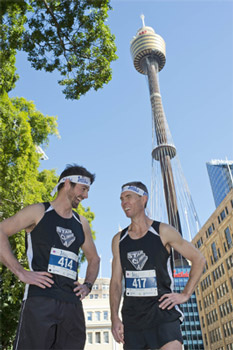How to Tackle a Stair Challenge

How to Tackle a Stair Challenge
Some all-time tips on how to handle stairs and live to tell the story
Anyone can climb a tower but to maximise performance Adam Ryan, Co-Founder Stair Climbing Australia has provided a selection of tips on how to prepare and train in the lead up to an event.
1. Cardiovascular and lower body muscle strength:
A good level of cardiovascular endurance is required to tackle a stair challenge and can be achieved through swimming, running, cycling and hiking. To take performance to the next level lower body muscle strength will also be required as legs are the major muscle used when carrying the body weight vertically. Think hill climbing, soft sand running, stair climbing, squats and general weight training using a leg press machine and lunging with added weight.
2. Frequency:
Try and complete at least three training sessions per week walking/running up stairs. Local parks, office buildings and grandstands are the best way to build stair climbing legs. For those looking for a more intense workout try running with a pack on your back or use ankle weights to get the leg muscles burning. Try to vary the workout as much as possible. Cycle, swim, run, hike. Do anything to keep workouts fresh and interesting.
3. Progressive Intensity
Gradually increase the intensity and duration of the workout. In each stair climb session climb double the amount of steps to the race you have entered. Don't make the mistake of training too hard or too early. Gradually increase the intensity and duration of workouts. This will allow your body to adjust in a manageable way.
4. Nutrition
Eating well will help optimise running performance on the day. Whether you're a first timer or a regular stair climber, nutrition can make a difference to performance. A well balance diet incorporating nutrient rich foods will help improve overall health and performance. Don't forget to maintain hydration by drinking lots of water throughout your training schedule.
5. Rest
Remember to rest! Every rest session allows muscles a chance to recover and repair themselves after intense exercise. Try and have every second day as a rest day.
For more information on the Sydney Tower Eye or SKYWALK visit www.sydneytowereye.com.au
MORE
- Rack It Range Extensions
- Lunch Style 2016
- Nicholas Demos Solving Life Issues Online...
- Warm Up With DeLonghi This Winter
- Chill Out Chair
- Spring 2014 Dulux
- in.cube8r
- Forty Winks: Buyer's Guide To Bedding
- Ageing In One's Own Home
- European Apothecary Sea Salt Candle
- Survey Reveals Housework Wars Behind Closed Doors



